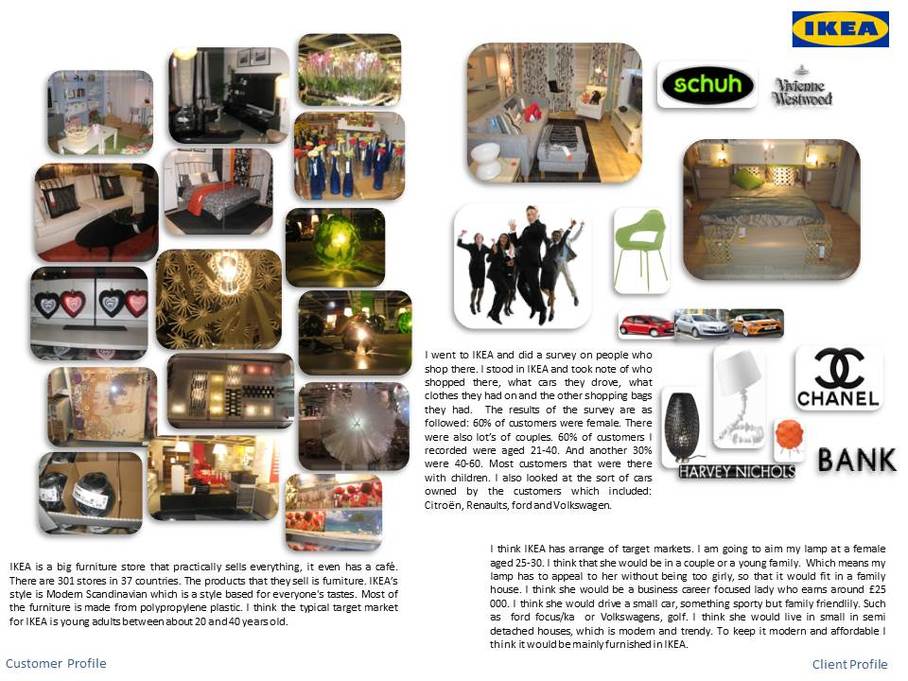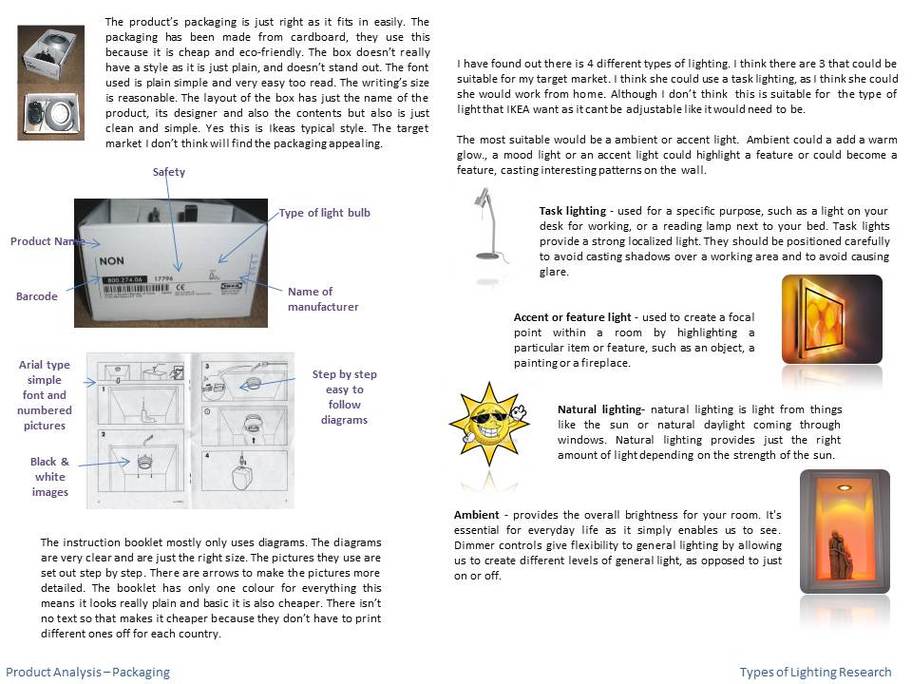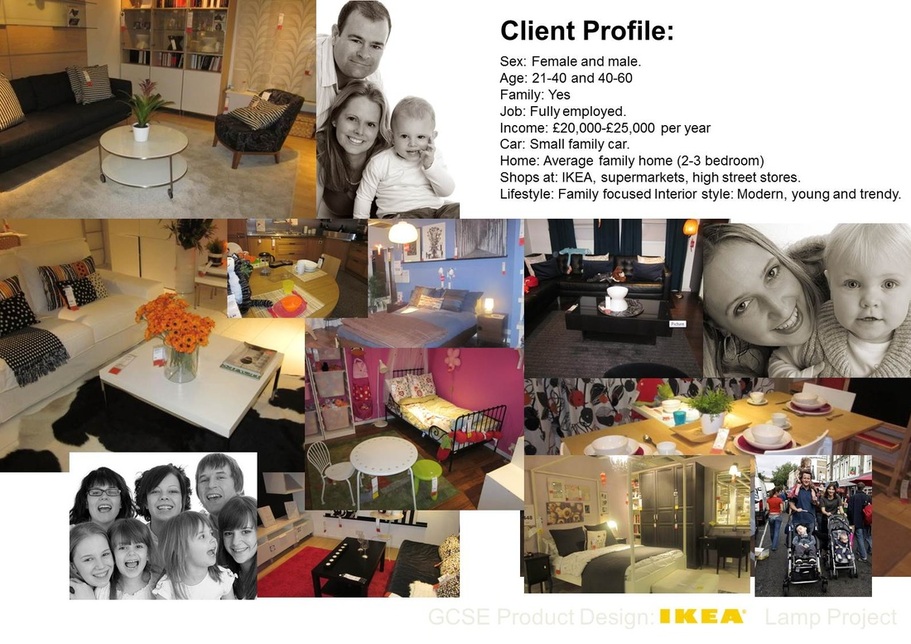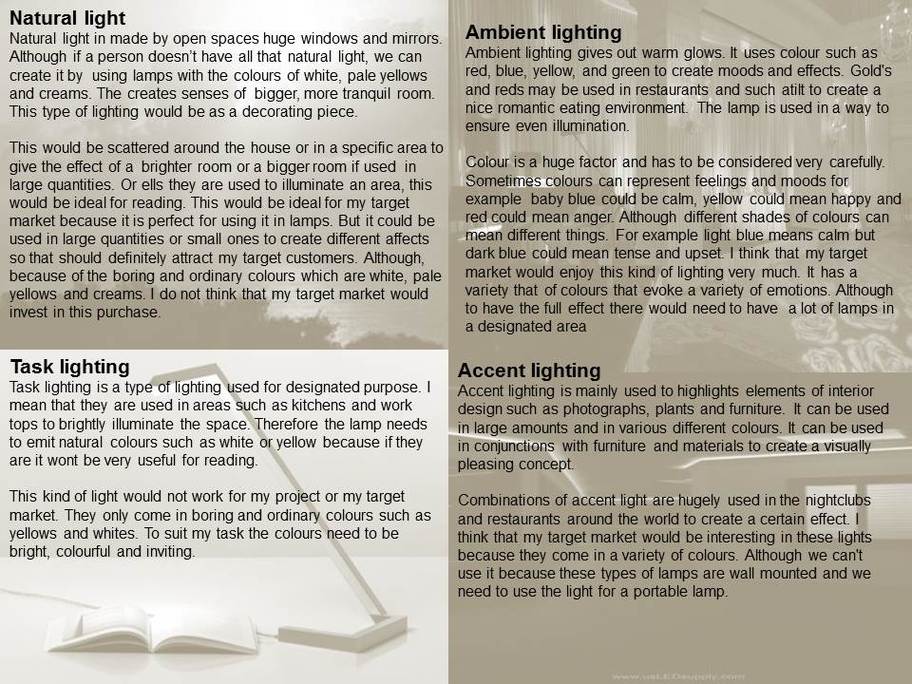Research
The research section of the coursework is worth a maximum of 8 marks. This is an important part of the design process and will be completed by looking at both primary and secondary research areas.
Primary research
This research requires you to seek 'real life' information from speaking to your actual chosen target market. This is often seen as being more important than secondary base research.
- Existing product research (Analysis) ACCESS FM
- Visiting Places (e.g. IKEA)
- Talking to people/questionnaires/survey results
- Material, components and finishes testing
Secondary research
This research can be information obtained from the internet, books and magazines.
- Ergonomic research (ensuring the product is suitable for the user)
- Existing products
- Client and company profiles
- Different types of lighting/moods that they create
- Prices, parts, components and safety legislation
- Packaging, assembly, labeling
- Design movements and styles
Primary research
This research requires you to seek 'real life' information from speaking to your actual chosen target market. This is often seen as being more important than secondary base research.
- Existing product research (Analysis) ACCESS FM
- Visiting Places (e.g. IKEA)
- Talking to people/questionnaires/survey results
- Material, components and finishes testing
Secondary research
This research can be information obtained from the internet, books and magazines.
- Ergonomic research (ensuring the product is suitable for the user)
- Existing products
- Client and company profiles
- Different types of lighting/moods that they create
- Prices, parts, components and safety legislation
- Packaging, assembly, labeling
- Design movements and styles
Primary & secondary research examples

www.gcseproductdesign.weebly.com by Helen Dunn is licensed under a Creative Commons Attribution-ShareAlike 4.0 International License.





